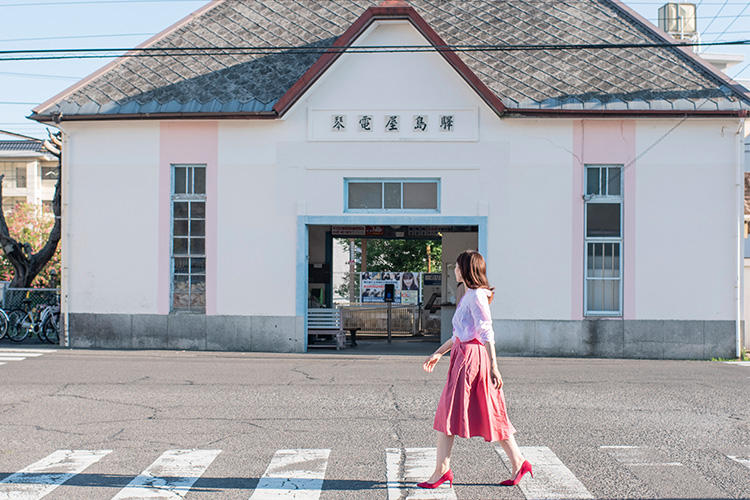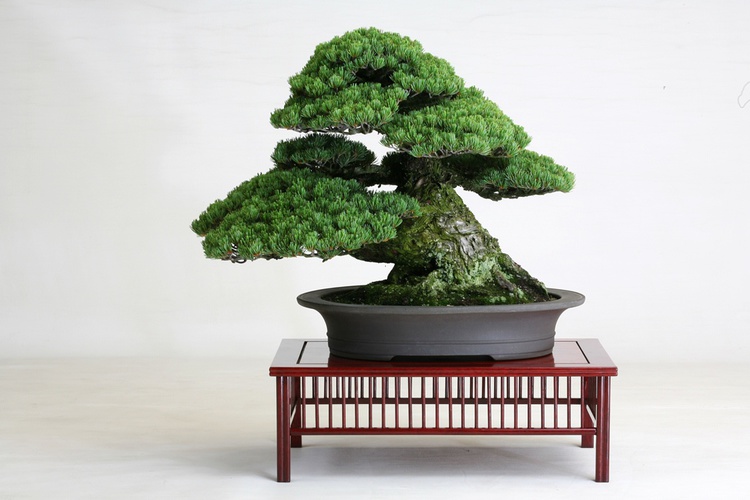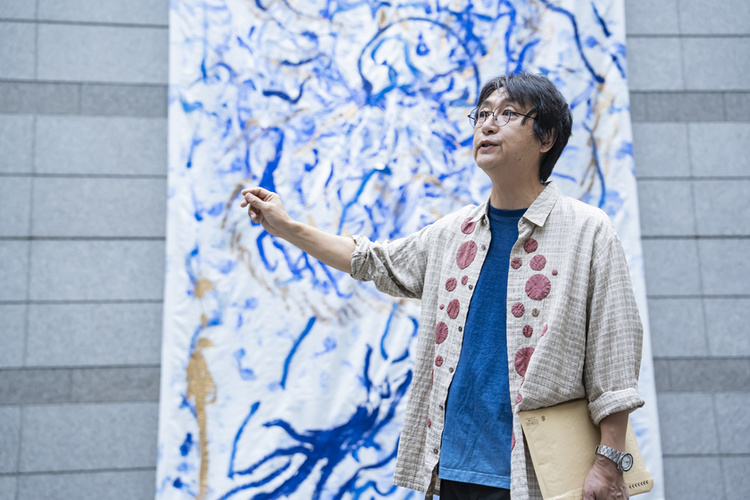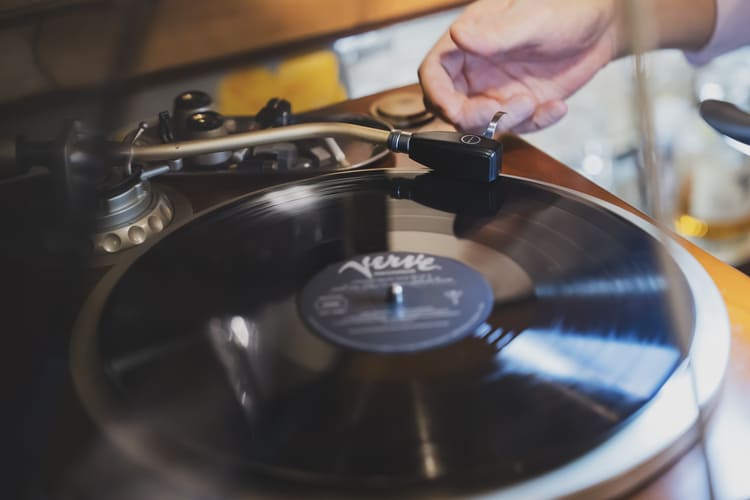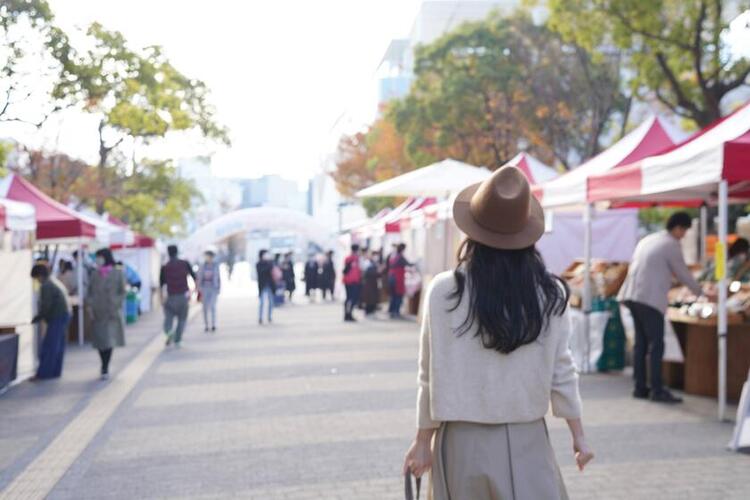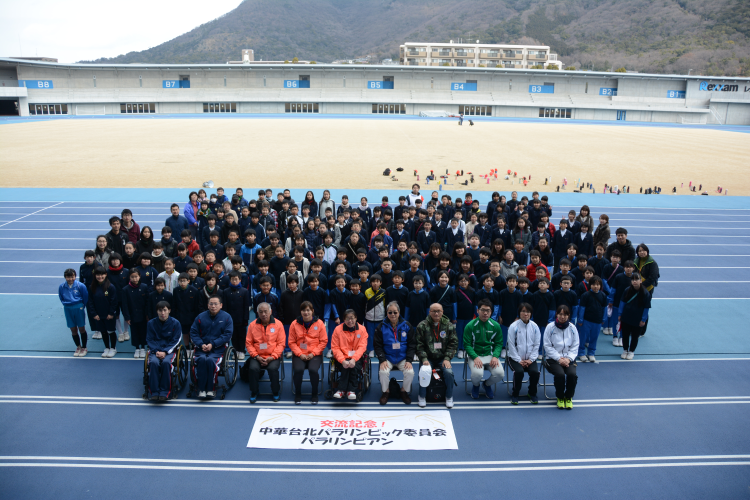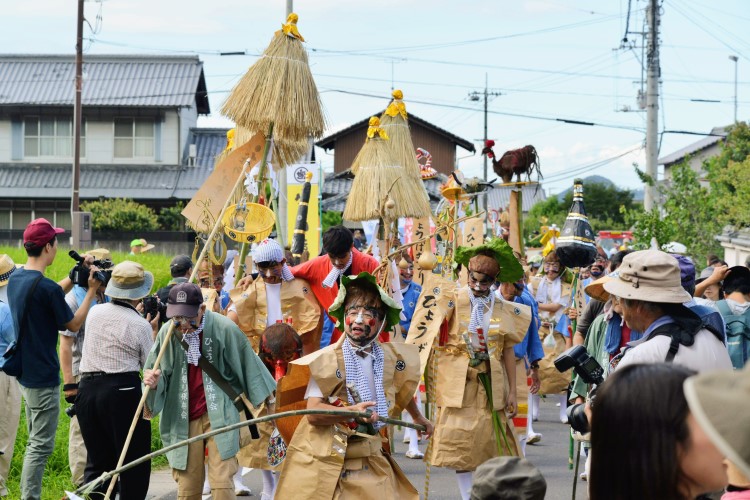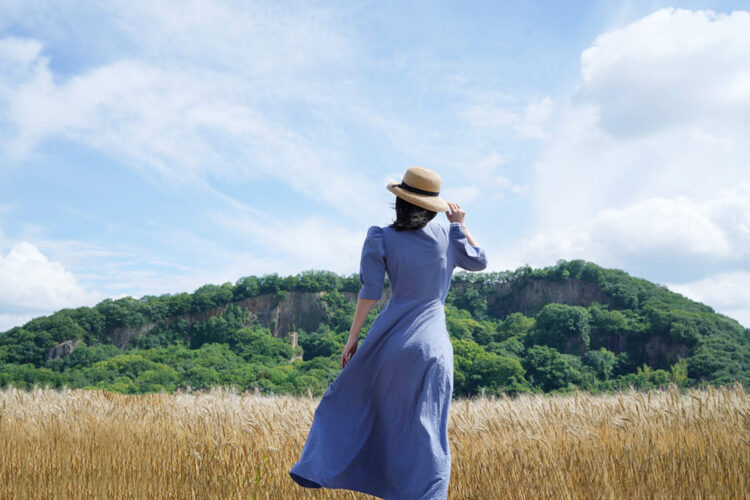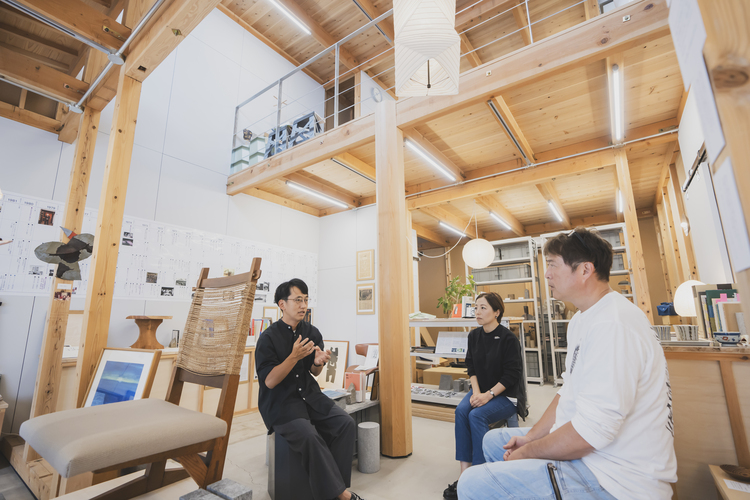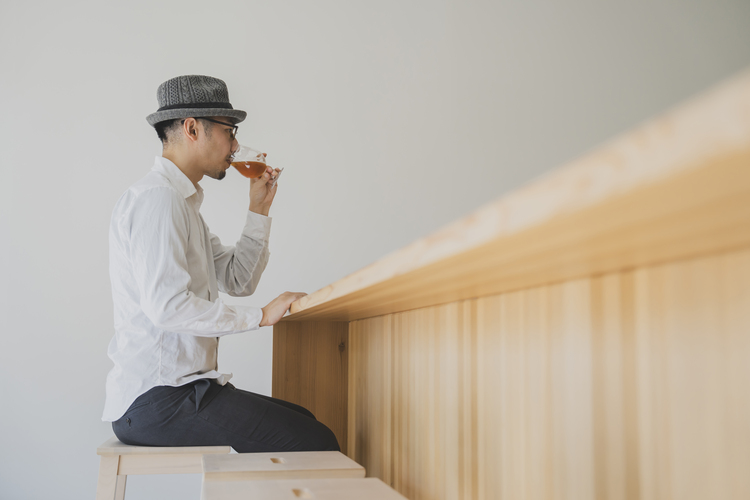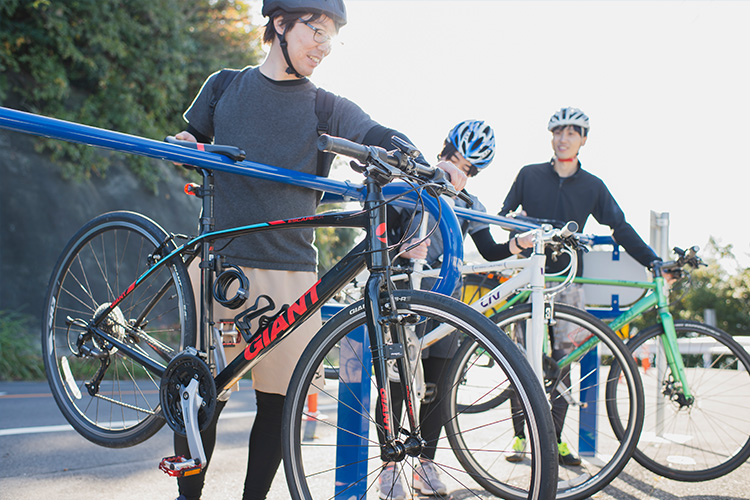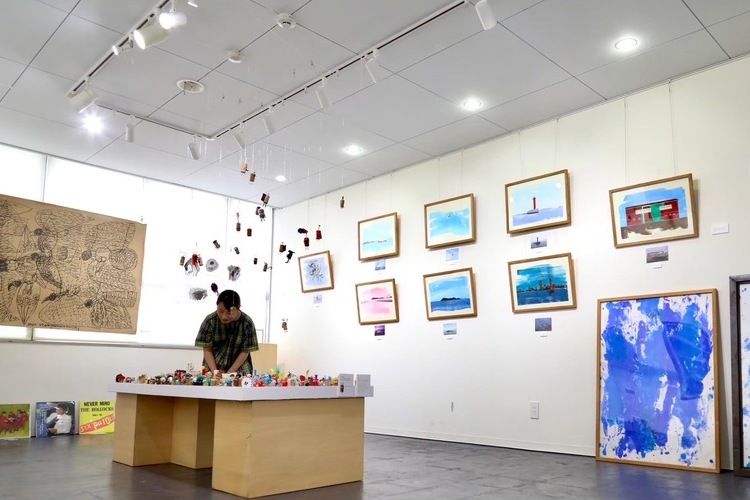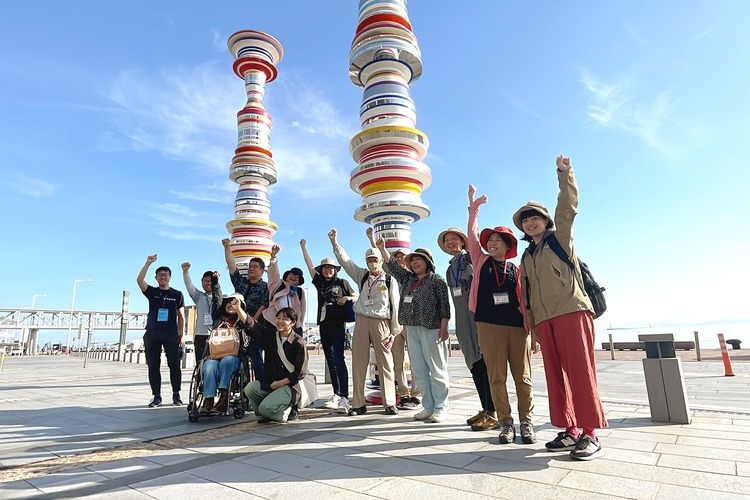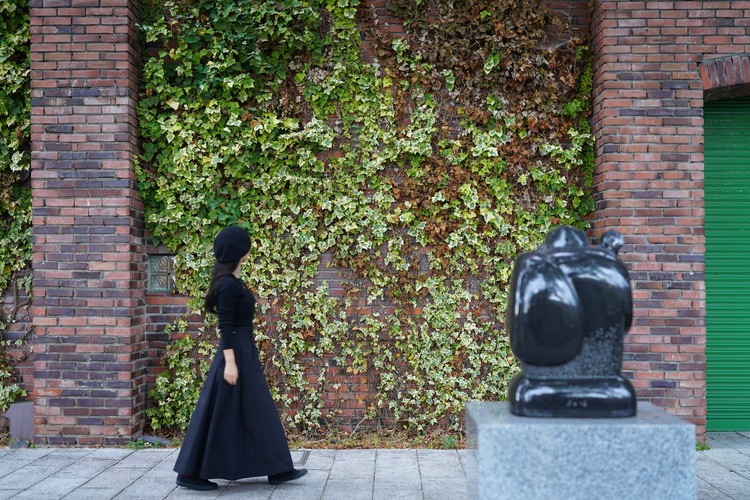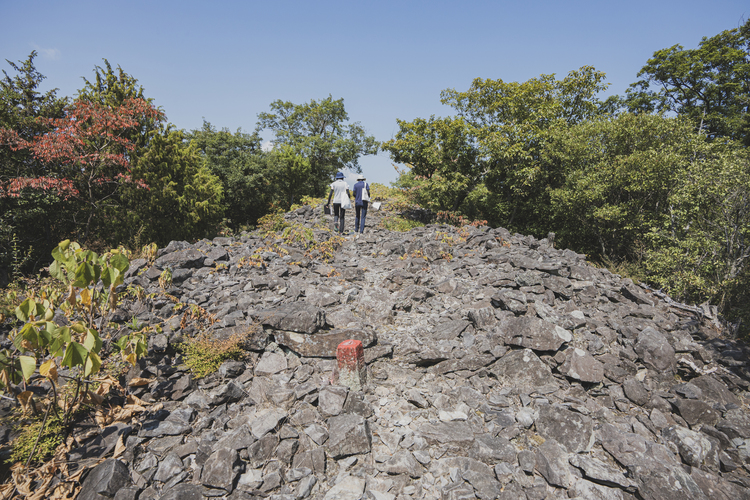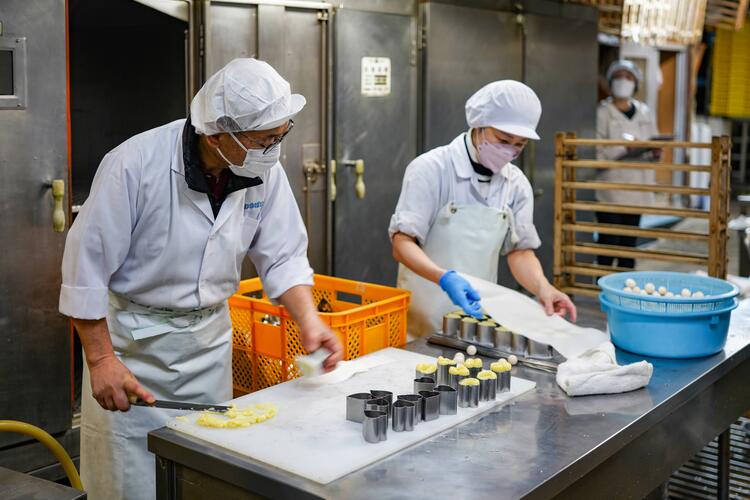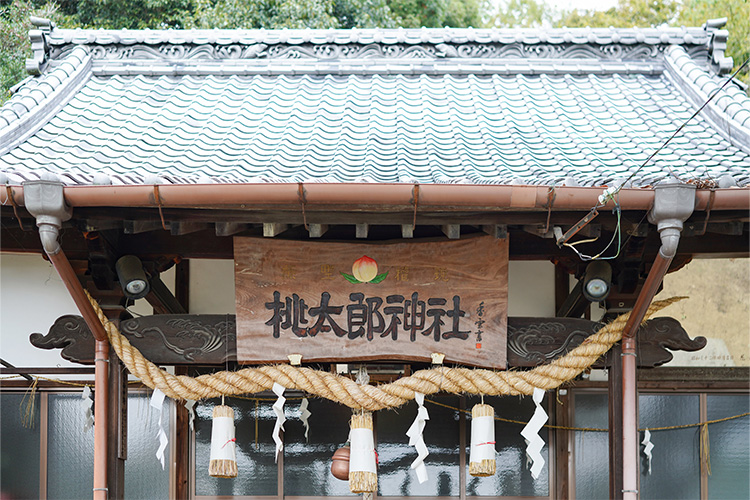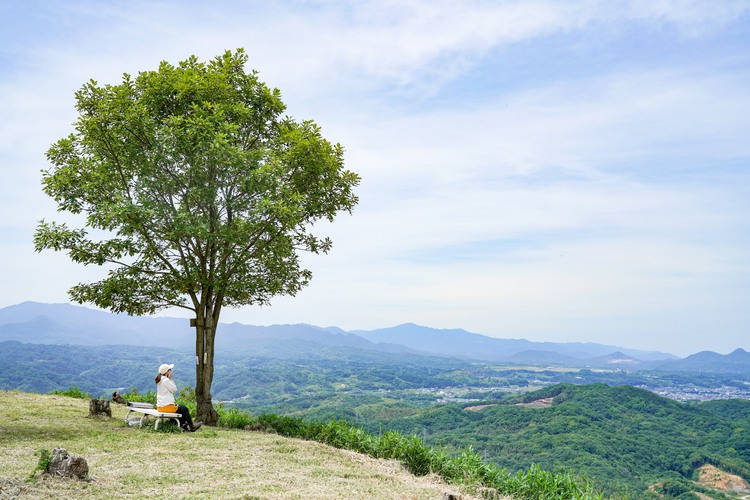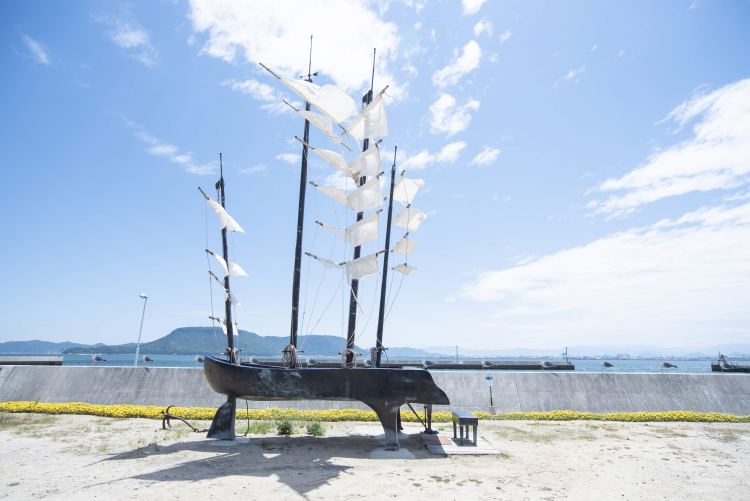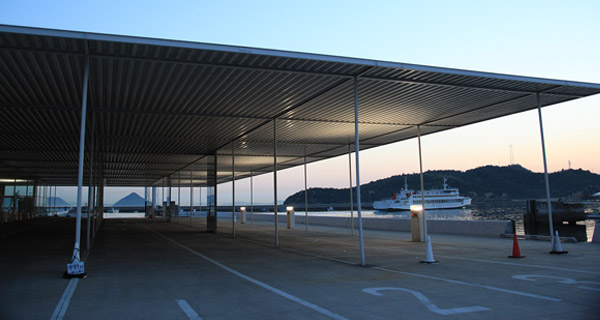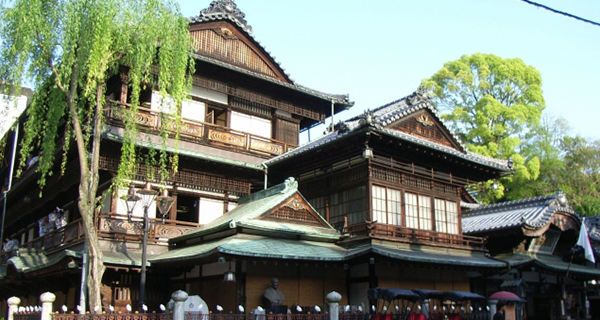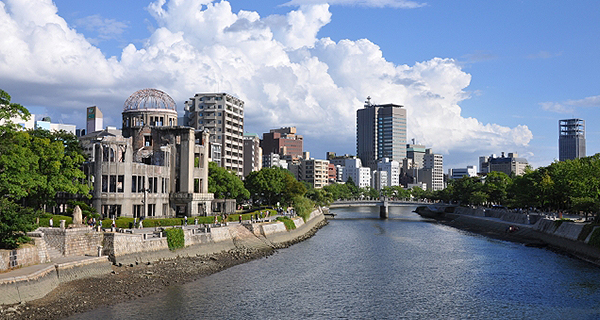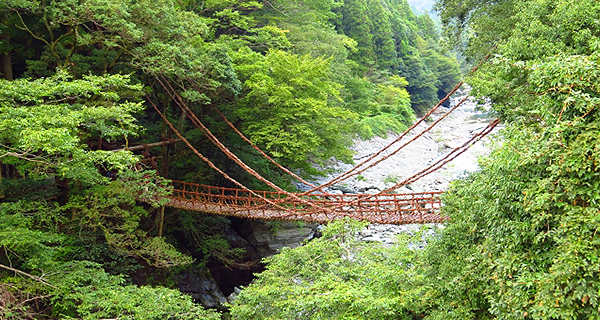Setouchi attracts global attention as an area with a calm, beautiful natural environment and unique history. Takamatsu-shi in Kagawa also attracts many tourists from all over the world, who seem to be enjoying the attractive elements of this area firsthand.
Select items reminiscent of the traditions and culture of Takamatsu as souvenirs after visiting various places and enjoying yourself.
We asked the staff of three shops in Takamatsu-shi, which offer a wide range of local specialty goods of Kagawa, to introduce the traditional crafts of Takamatsu that are recommended as souvenirs for tourists to Japan.
Sanuki Chochin Lanterns
Sanuki Toy Museum Shop
The Sanuki Toy Museum Shop is inside the interactive art museum where visitors can touch and play with toys. The shop sells wooden toys for mokuiku, wood education, as well as traditional local crafts and original products developed in collaboration with local creators. Among them are Sanuki Chochin lanterns, which are introduced here.
Sanuki Chochin -- lanterns created as votive offerings on the Shikoku pilgrimage of 88 temples
Sanuki Chochin originated around the 10th century, introduced from China by Kobo Daishi. Later, lanterns in a wide variety of forms were created as votive offerings to the 88 temples on the Shikoku pilgrimage. Decorated with colorful patterns, they are also highly valuable treasures. They have also been used daily as practical tools for illuminating people's footsteps for a long time.
In Kagawa, these lanterns are made by Mr. Masanobu Miyoshi, the 11th owner of Miyoshi Chochin-ten (lantern shop) in Takamatsu. He also creates Kaomise Chochin, lanterns showing crests of actors that are put up at the Konpira Grand Theatre (Kanamaru-za) in Kotohira-cho when the annual Shikoku Konpira Kabuki Oshibai (kabuki theater performance) is held there.
Mr. Miyoshi completes the tasks independently, from beginning to end. He says it is the mission of a craftsperson who has inherited the art. Among the skills is an advanced technique for making a lantern without cutting the bamboo strip, which is believed to attract good luck. Lanterns made with this technique are called Ippongake Chochin. It is said to be the only technique of this kind in Japan.
Daruma doll lanterns created by combining techniques
A recommended souvenir for them is Sanuki Chochin Daruma, or lanterns designed with the motif of a Daruma doll. They are traditional lucky charms in Kagawa, which are said to get rid of evil spirits and attract happiness with lights. Mr. Miyoshi makes two-layer, Daruma-shaped lanterns as lucky charms by combining techniques of his predecessors. They attract attention as a new form of illumination.
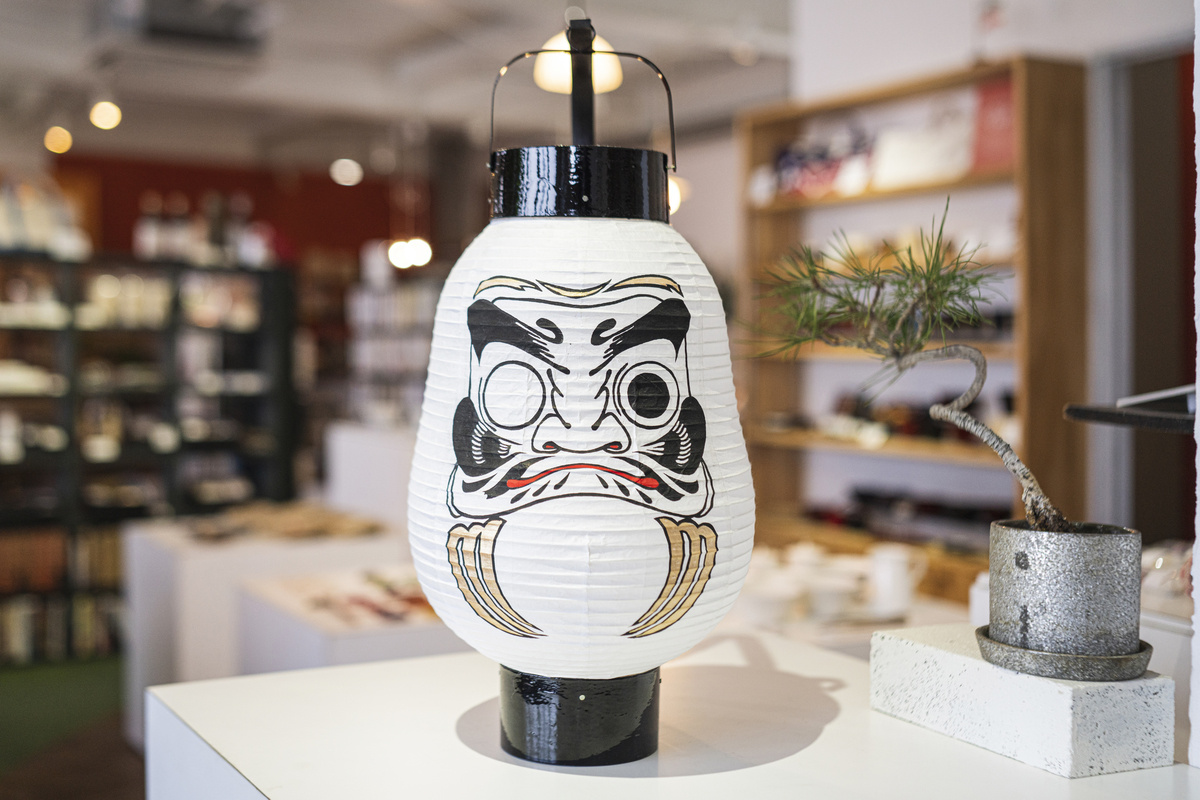
Sanuki Chochin Daruma is a unique lantern that features an asymmetric form with a swollen lower half. When a light is put inside, the white Daruma doll takes on a slightly orange color and the lantern illuminates the surroundings with a mellow light through washi paper. It is an excellent item for adding a Japanese element to your interior. It is also foldable and easy to carry around, which adds to its value as a souvenir.
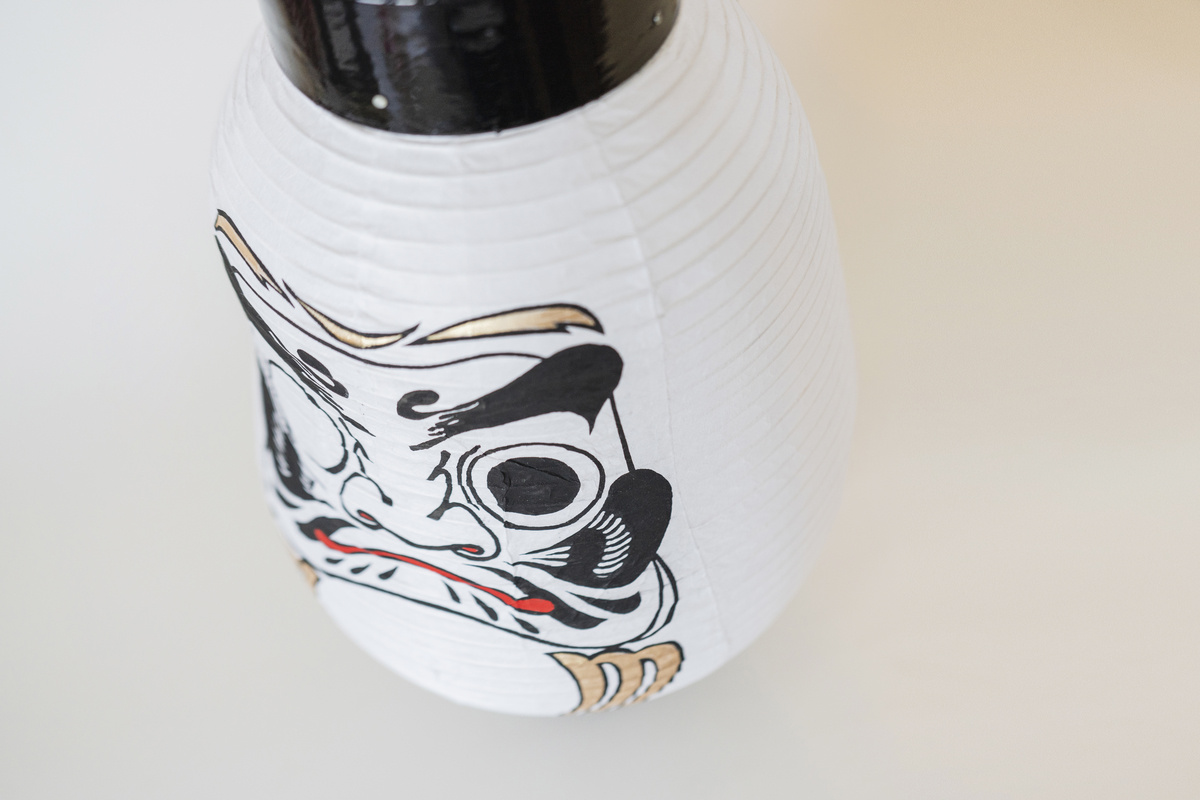
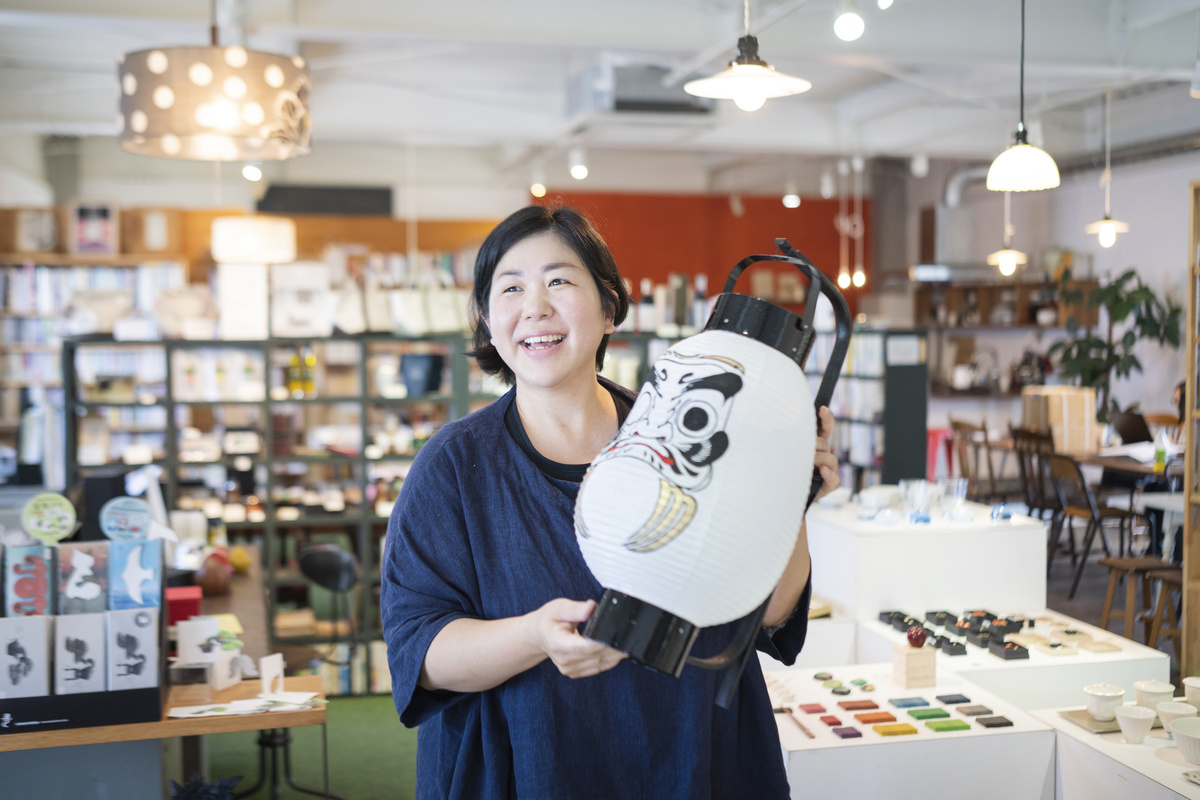
Aji Stone products
Town's Schule 963
Town's Schule 963 attracts attention as a lifestyle goods shop that offers items with various themes, including a café, gallery, sundry goods, food and craftwork, in the Marugame-machi Shotengai (shopping street) in Takamatsu. We will introduce Aji Stone products from this shop.
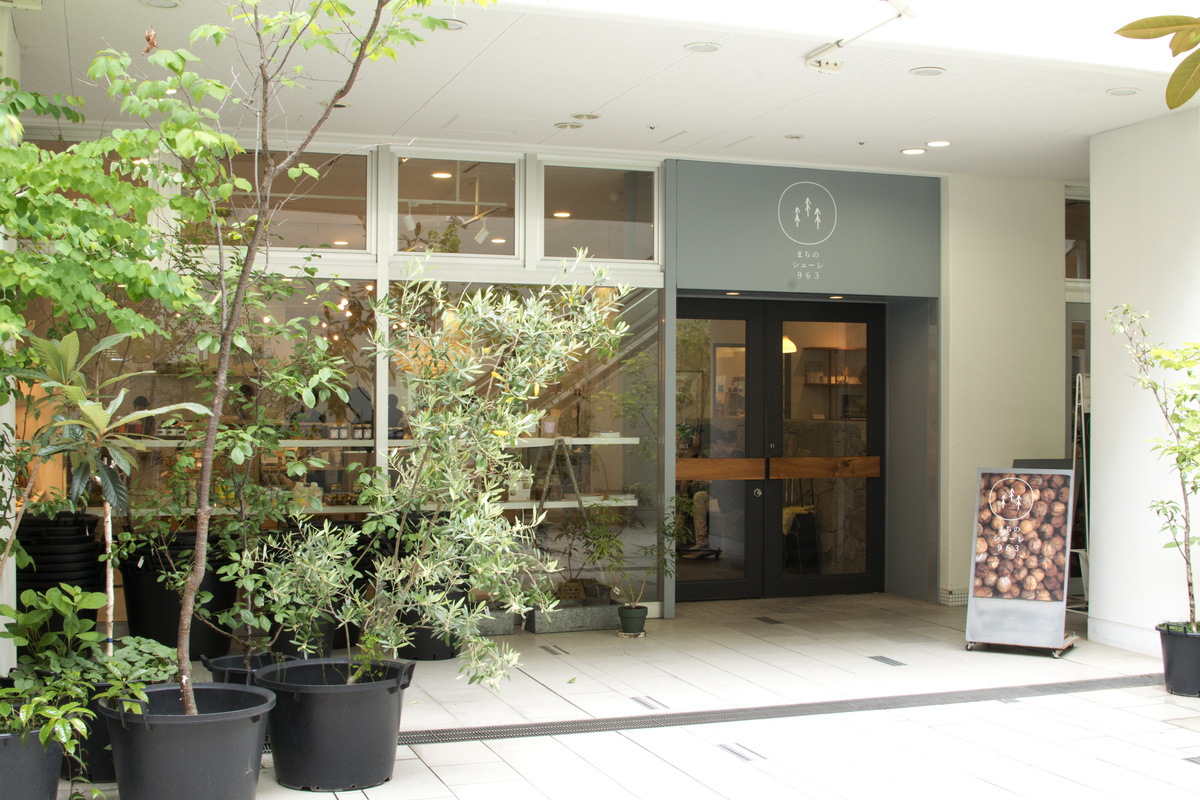
What is Aji Stone?
Aji Stone is granite found only in the Mure Aji district located to the east of Takamatsu-shi, Kagawa.
With a fine textured surface and the same hardness as quartz, Aji Stone is called the granite diamond. Because it is extremely hard and its particles are closely bonded, this stone permits elaborate carving and is resistant to weathering. Isamu Noguchi, a world-famous sculptor, set up an atelier in Mure, because he was attracted to Aji Stone and the advanced processing techniques of Aji Stone artisans.
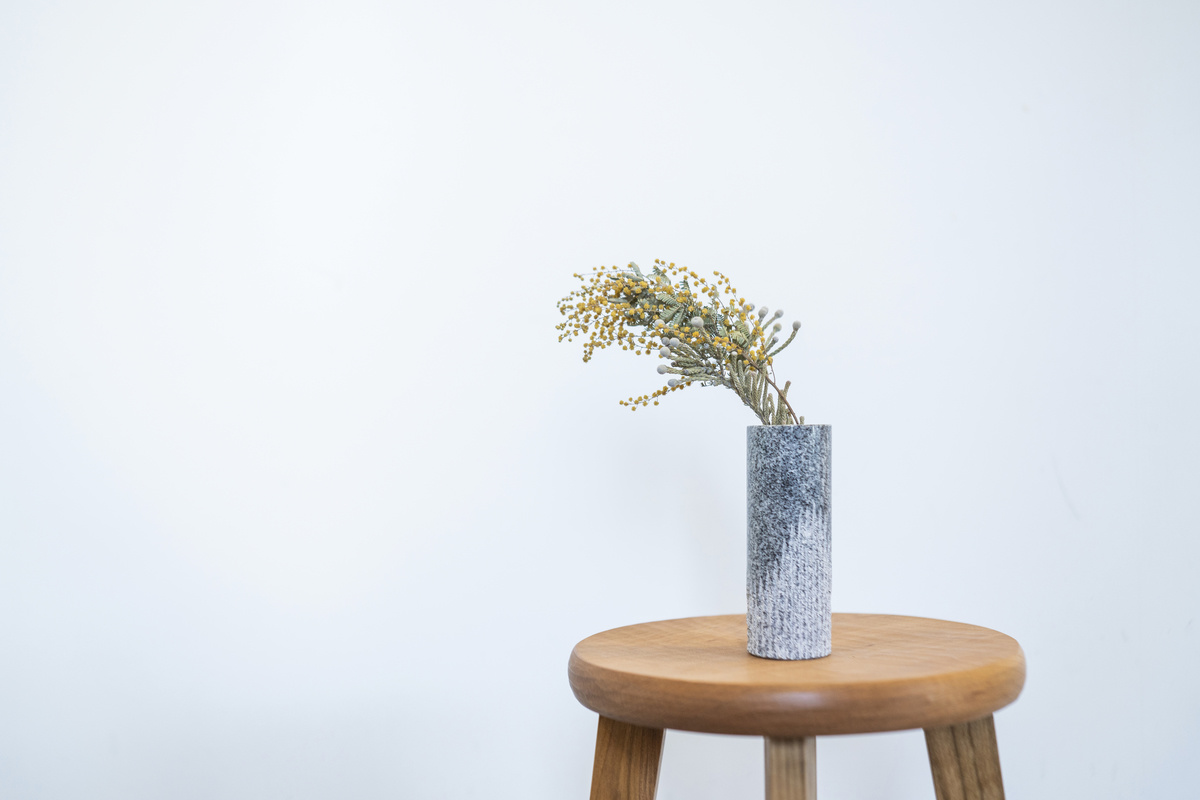
There are various types of Aji Stone. One is Komame, which features especially fine particles. A unique patchy pattern called Fu, which looks as if it contained water, appears only on the surface of this type of stone. A reddish brown stone called Sabi Ishi becomes more attractive as it is exposed to wind and rain.
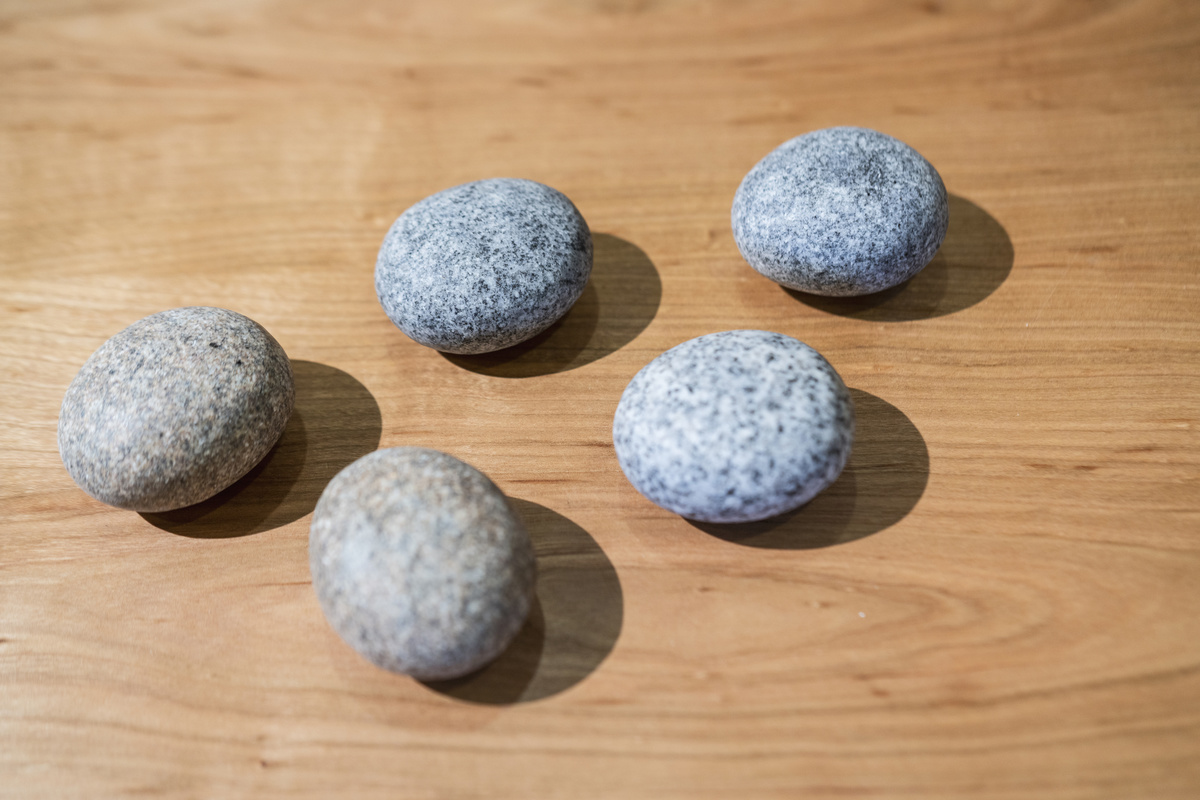
Due to its beauty and robustness, Aji Stone has been used as a first-class stone material for tombs and traditional stone lanterns (used in Buddhist temples, Japanese gardens and similar places), and as garden stones for landscaping Japanese gardens.
Aji Project -- New products made of Aji Stone
Advanced skills are required for processing Aji Stone, which is hard and has fine particles. In the Mure Aji district, there are many stone artisans called Ishiku, who have the skills to cut the hard stones into thin slices and carve them.
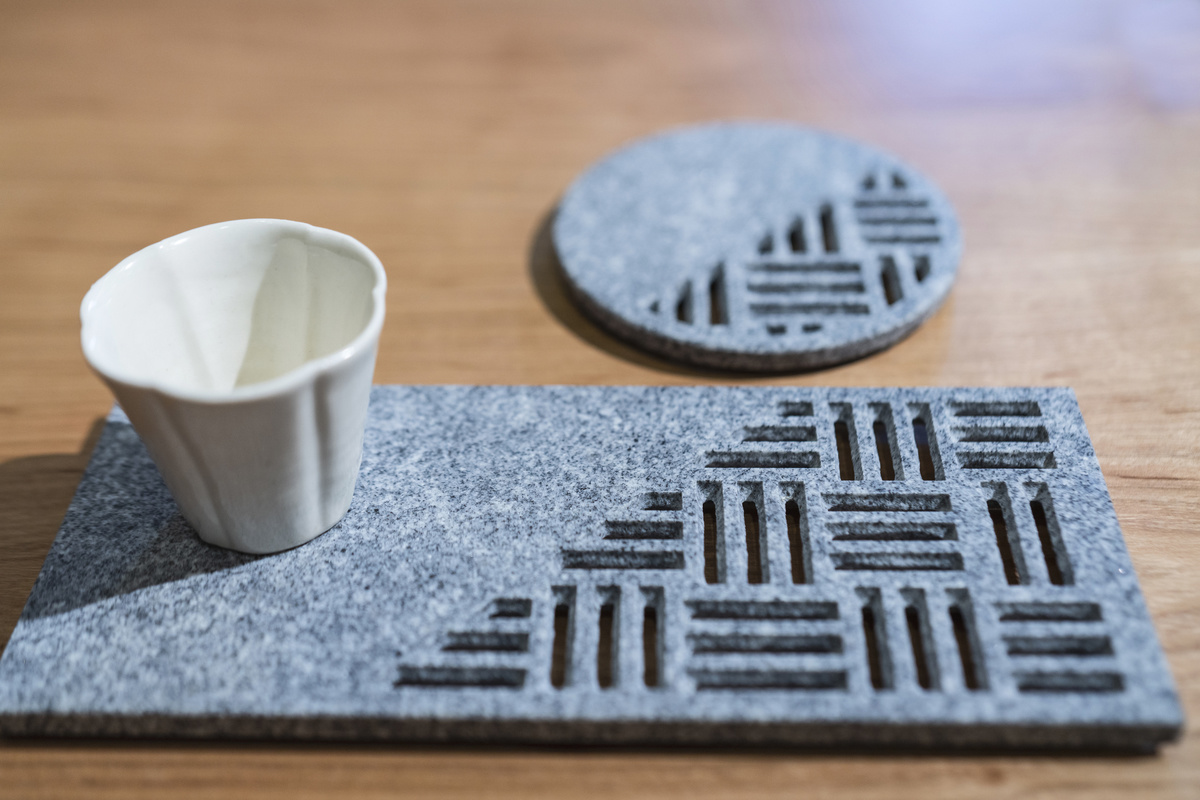
The Aji Project goods are created by combining the skills of Ishiku and the remnants of Aji Stone. They include kitchen ware such as wine coolers and pot stands, soap dishes, toothbrush stands and interior goods such as book ends, pen stands and flower vases. Ishiku artisans plan practical products on their own, focusing on properties of Aji Stone such as the heavy weight and resistance to water.
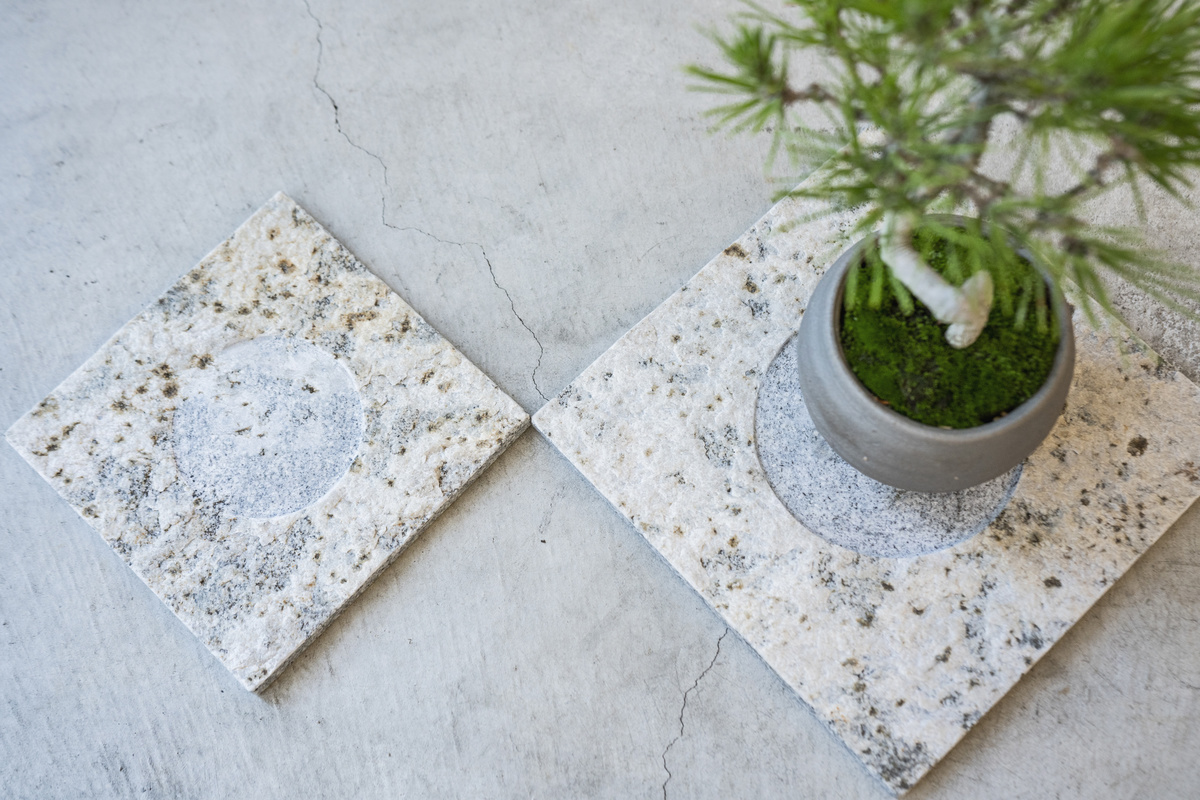
Decorate your living spaces with the natural beauty of Aji Stone, including its unique atmosphere, gloss and massiveness.
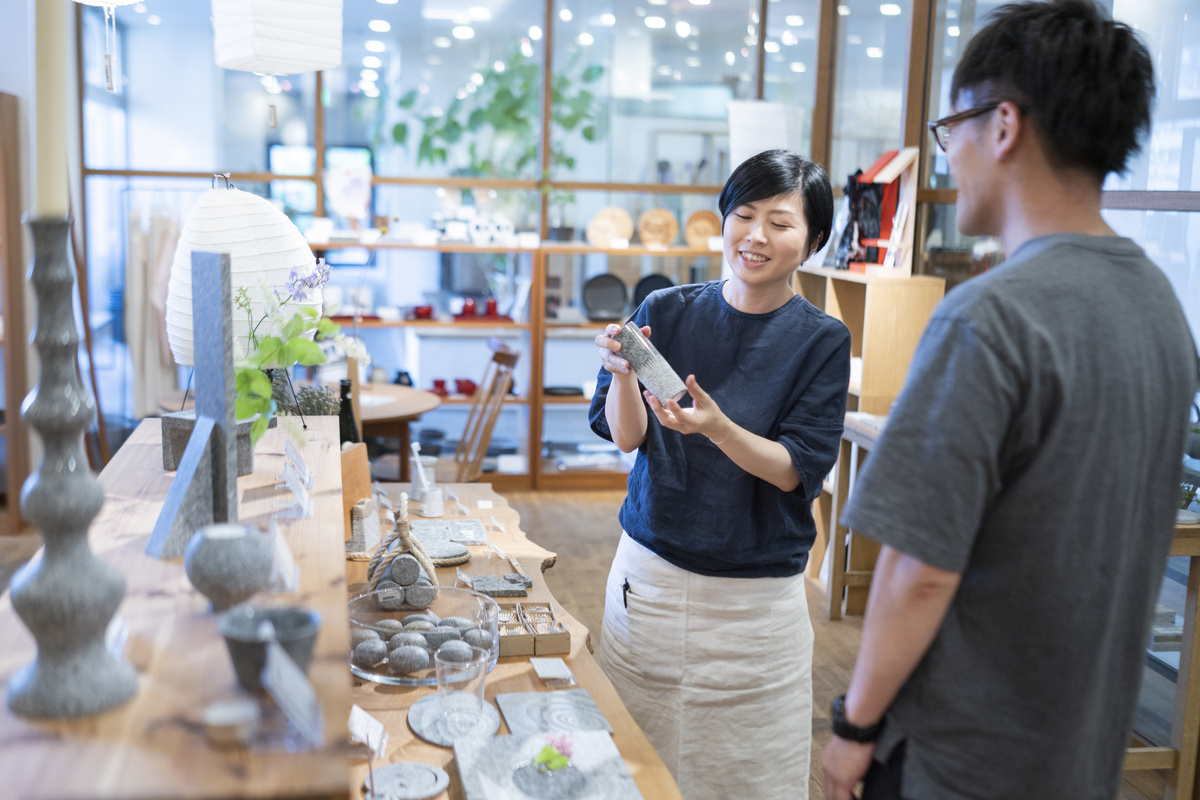
Sanuki Kagari Temari (stitched thread balls)
Kagawa Gift Shop Ritsurin-An
This gift shop is located in Ritsurin Garden, a Special Place of Scenic Beauty. To cater to needs of the large number of inbound tourists, the gift shop offers a wide range of local craft products and souvenirs of Kagawa. Among the products, we will introduce Sanuki Kagari Temari, stitched balls as traditional crafts.
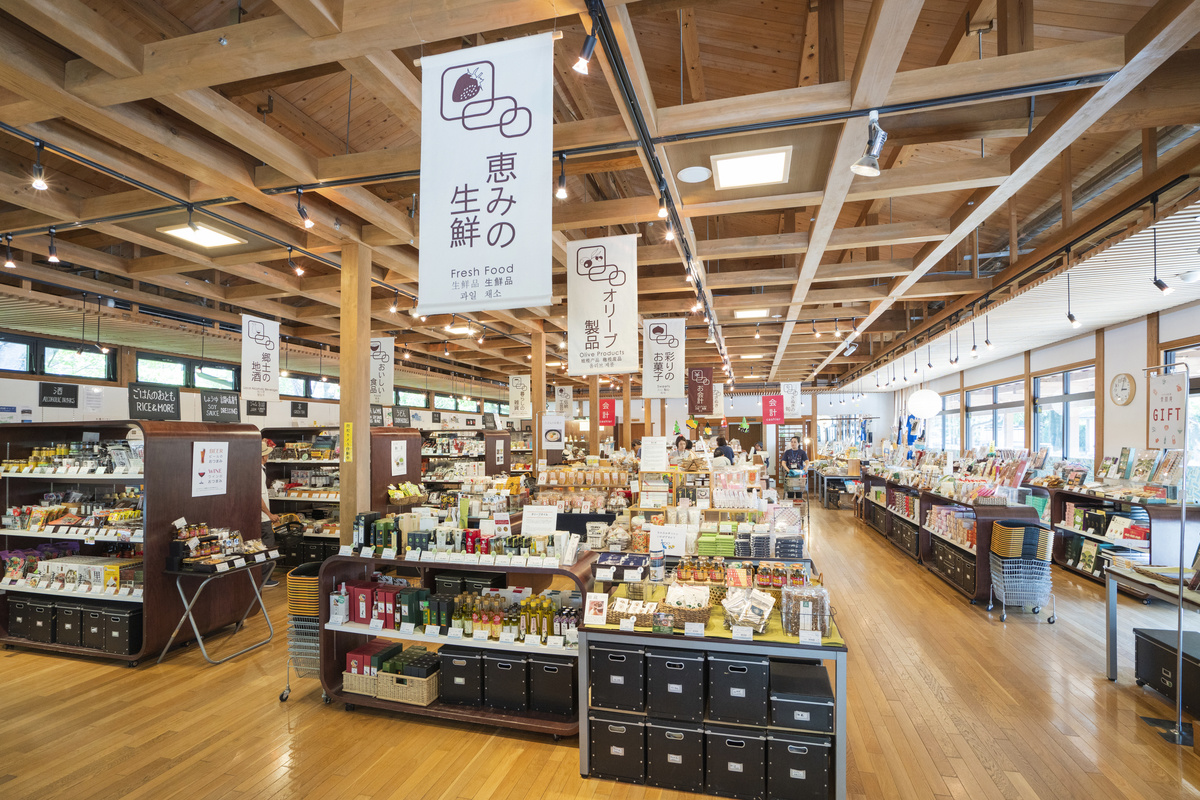
History of Sanuki Kagari Temari
It is said that temari thread balls were introduced from China during the Heian Period (794 to 1185). They have been loved by children across Japan as toys. As time passed, colorful, beautiful patterns on the balls were created using silk yarn in various colors. Those patterns became unique features of the traditional Japanese thread balls.
Temari balls from Kagawa feature beautiful geometric patterns on their surfaces. They are created using cotton, which is one of the three major white products from Kagawa known as the Sanuki Sanpaku (salt, sugar and cotton). The yarn is dyed with plant dye (kusaki-zome) and stitched one by one.
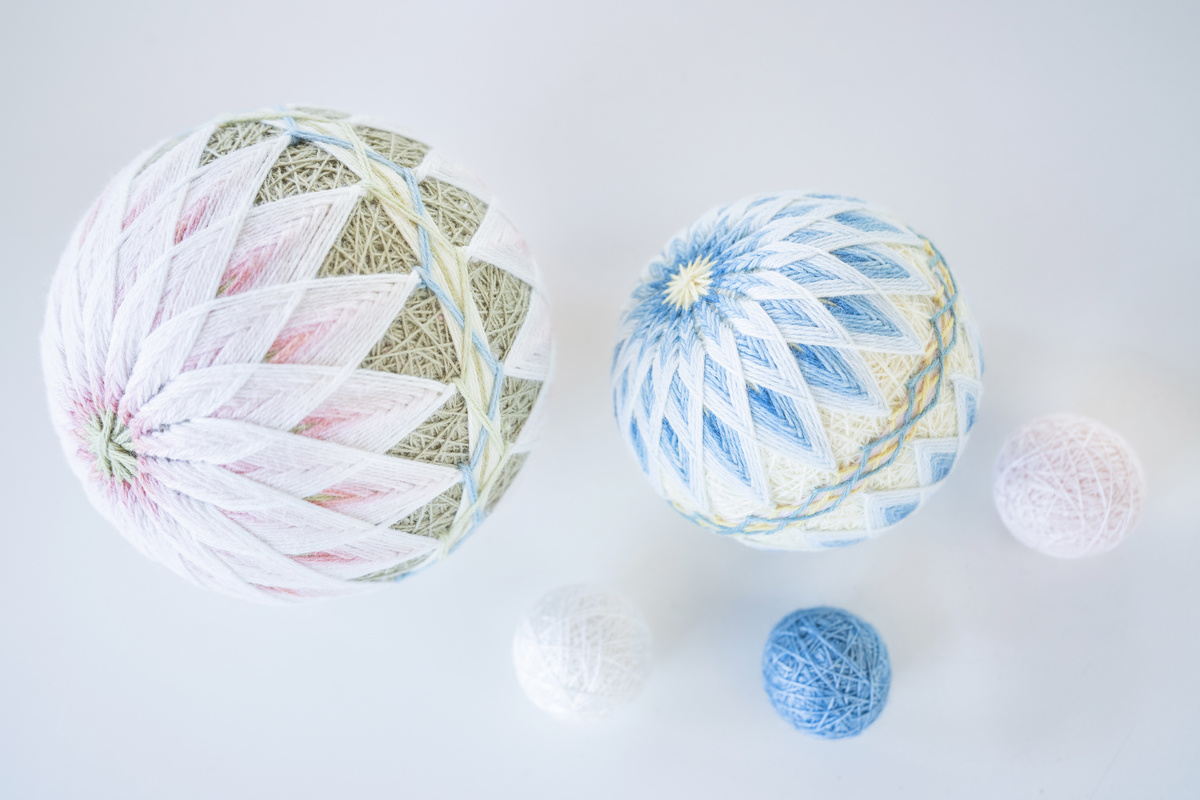
However, handmade temari balls began to decrease gradually in the Meiji Period (1868 to 1912), when rubber balls became widespread. There was a time with virtually no artisan who made temari. Mr. Kazuo Araki, who worked hard to establish the Sanuki Mingeikan (Folk Craft Museum) in Ritsurin Garden as a Special Place of Scenic Beauty, established Sanuki Kagari Temari Preservation Association in 1977 and strived to revive the traditional Japanese thread balls. His enthusiasm was passed on to his family, and now Mrs. Eiko Araki works as the certified master of Sanuki Kagari Temari.
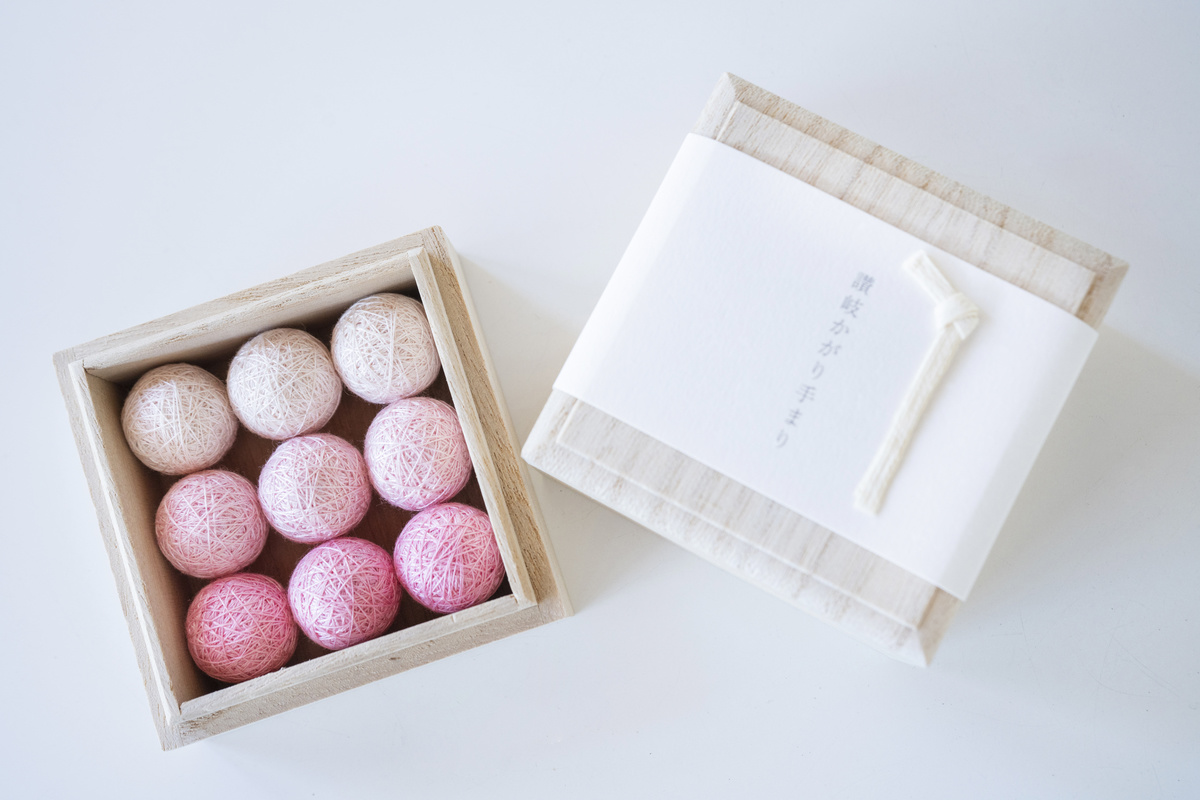
The value of Sanuki Kagari Temari
〈Cotton yarn〉
The balls are made using cotton yarn, which spread among common people because cotton is easy to grow and turn into yarn.
〈Dying with plant dyes〉
Chaff wrapped in thin paper forms the core of temari, although it is not visible from the outside. Thin cotton yarn is wrapped randomly around the core to make a round-shaped rough ball.
〈Chaff core〉
Chaff wrapped in thin paper forms the core of temari, although it is not visible from the outside. Thin cotton yarn is wrapped randomly around the core to make a round-shaped rough ball.
〈Hand stitching〉
When the rough ball is finished, lines dividing the ball equally are stitched. The lines serve as guidelines for stitching the pattern—the essence of the kagari technique.
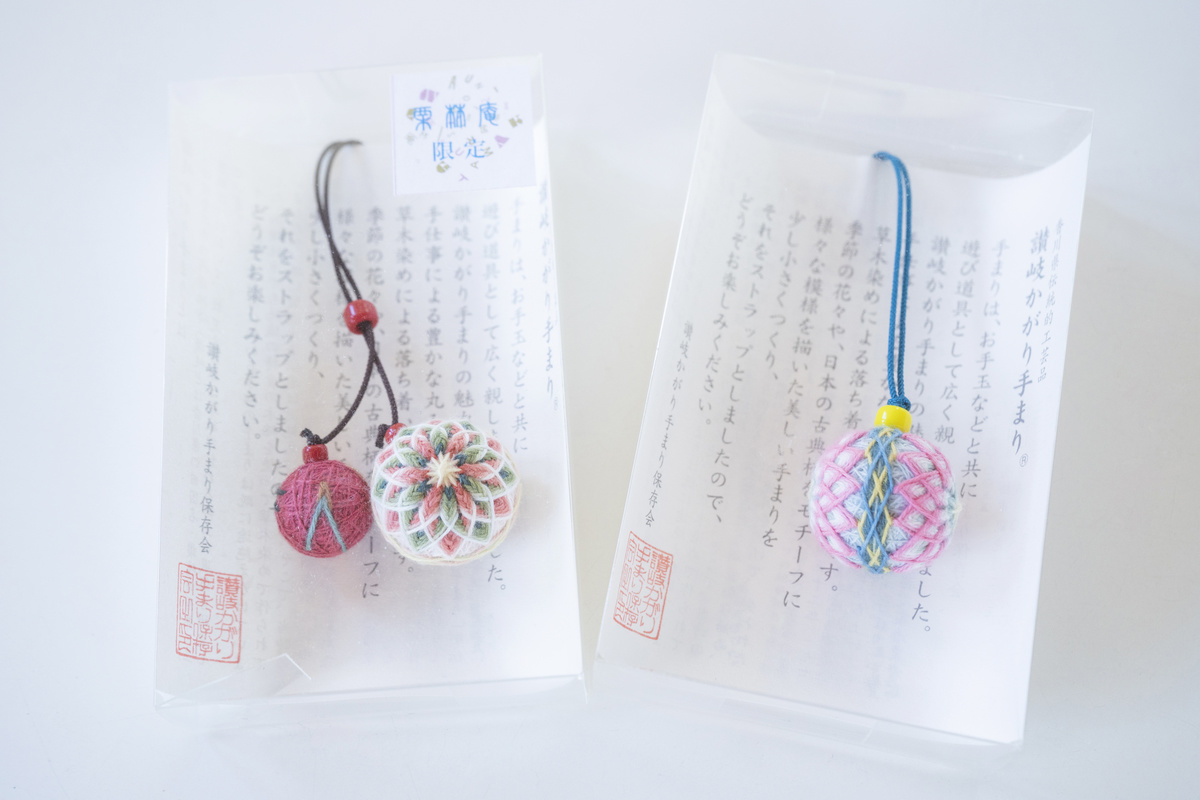
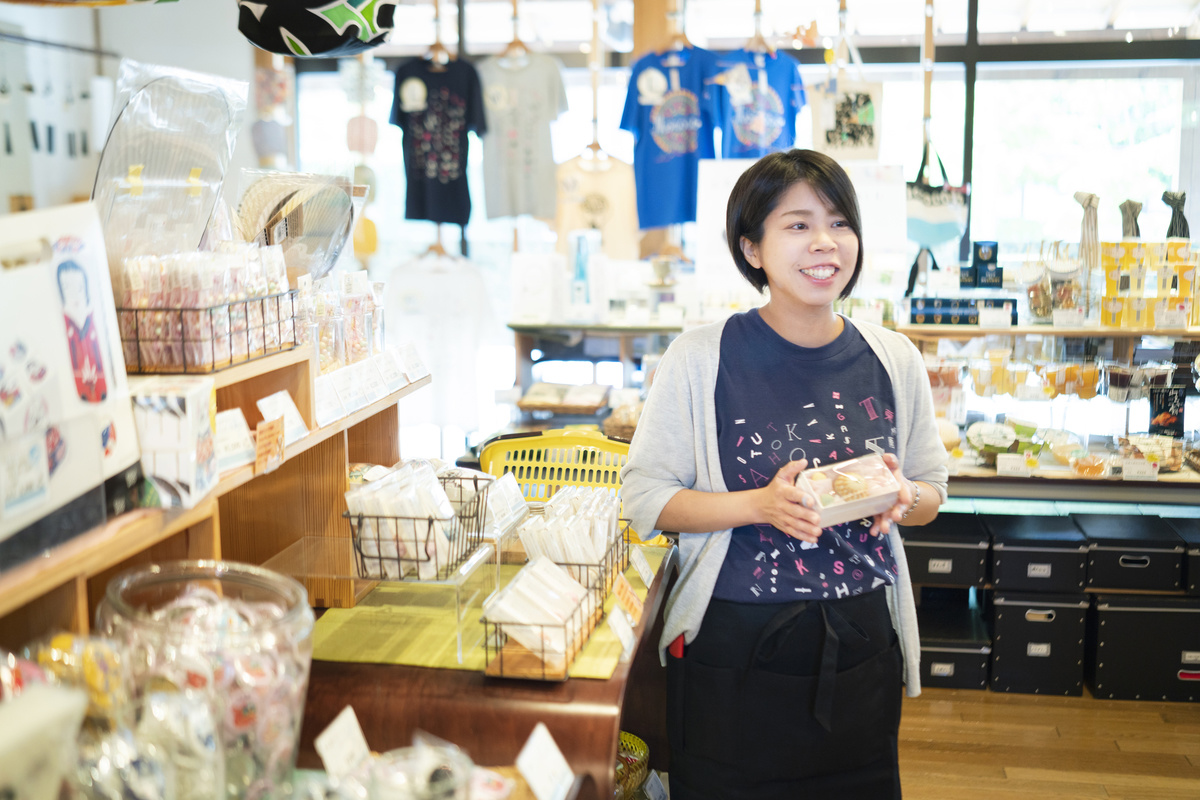
In addition to ones introduced here, Takamatsu has many goods with the warmth of handiwork.
- Bonsai
- Kagawa Lacquerware
- Sanuki Okedaru (wooden tubs)
- Ranma Chokoku (goods created by applying transom sculpture techniques)
- Kude Shoji (wooden lattice work for shoji paper sliding doors)
- Woodworking products made of Koematsu (heartwood of age-old black pine trees)
- Paulownia boxes
- Wooden confectionery molds
- Takamatsu Wagasa (traditional Japanese umbrellas)
- Koshiki Datami (traditional tatami mats)
- Rihei-yaki ceramics
- Masonry products made of stones from Mt. Washinoyama
- Beaten copperware
- Plastering trowels
- Sanuki Chuzohin (foundry goods)
- Botaori (textile fabrics)
- Sanuki Norizome (paste-resist dyeing method)
- Sanuki Shishigashira (lion head for lion dance)
- Takamatsu Hariko (papier-mache)
- Takamatsu Yomeiri Ningyo (traditional clay dolls distributed by brides to their neighbors)
Artisanship in Takamatsu for creating various items has been passed on for many years. Encounter many craft products that will make good souvenirs.
Sanuki Toy Museum Shop
- Address
- 8-1 Daikumachi, Takamatsu, Kagawa
- Business hours
- 10:00-19:00
- Regular holidays
- Thursday
- TEL
- 087-887-6762
- URL
- https://sanuki-toymuseum.com/
- Supported languages
- 日本語
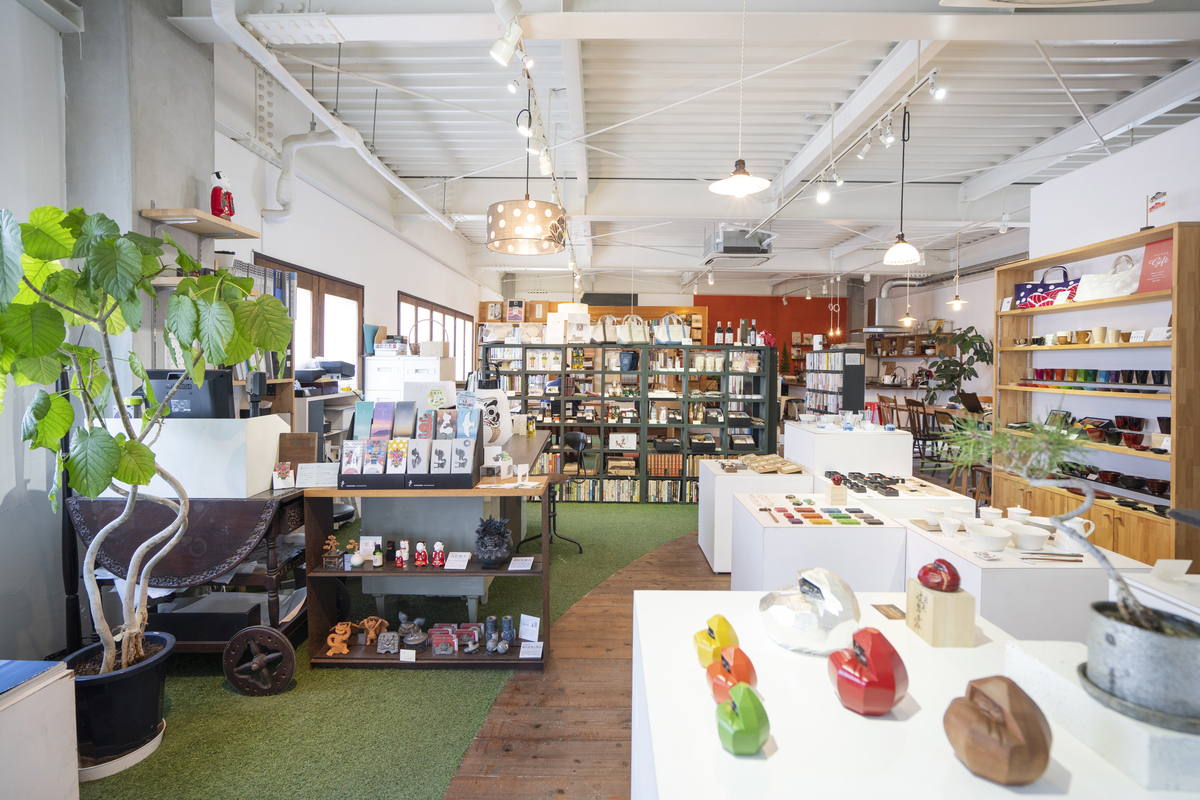
Town's Schule 963 attracts attention as a lifestyle goods shop that offers items with various themes, including a café, gallery, sundry goods, food and craftwork, in the Marugame-machi Shotengai (shopping street) in Takamatsu.
Town's Schule 963
- Address
- 3bangai-higasikan-2F, Marugamemachi, Takamatsu-shi, Kagawa
- Business hours
- 11:00~19:30
- TEL
- 087-800-7888
- URL
- https://www.schule.jp
- Supported languages
- 日本語
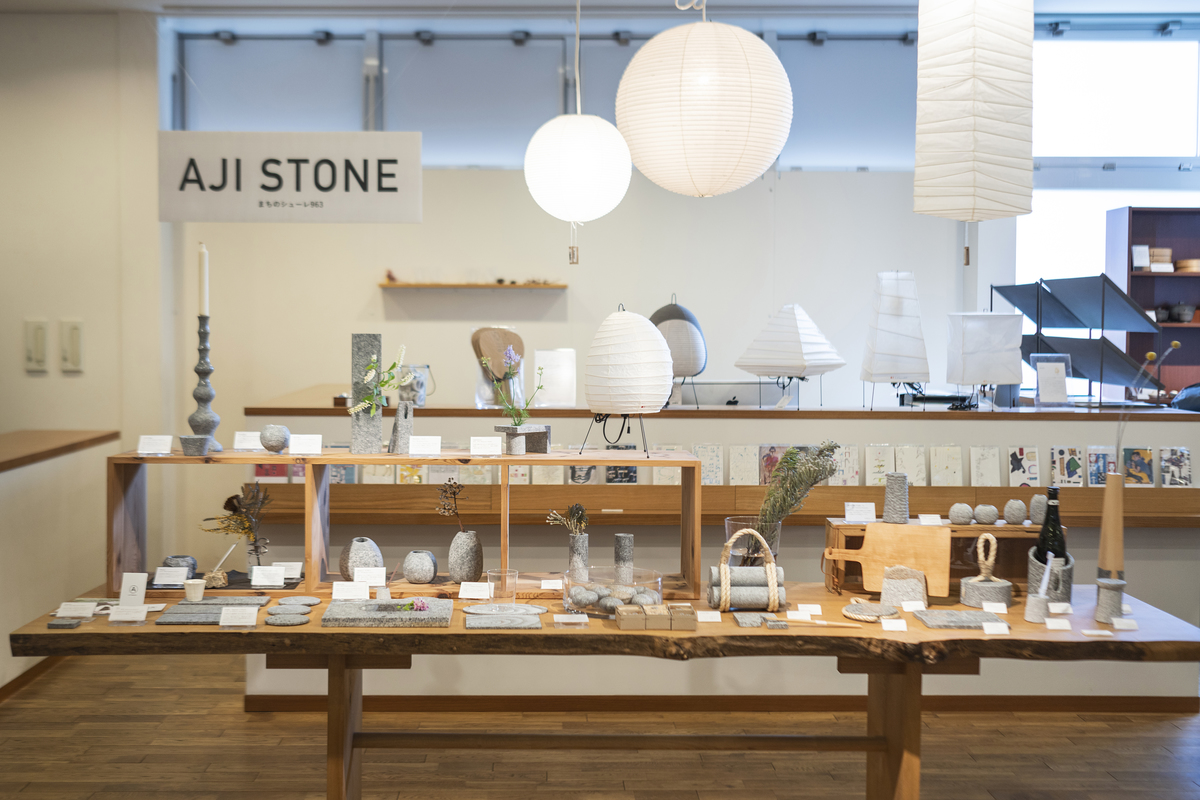
Town's Schule 963 attracts attention as a lifestyle goods shop that offers items with various themes, including a café, gallery, sundry goods, food and craftwork, in the Marugame-machi Shotengai (shopping street) in Takamatsu.
Kagawa Gift Shop Ritsurin-An
- Address
- 1-20-16 Ritsurincho, Takamatsu-shi, Kagawa
- Business hours
- 9:00-17:00(At the same time as the Garden)
- Regular holidays
- Open 365 days a year
- TEL
- 087-812-3155
- URL
- https://www.ritsurinan.jp/
- Supported languages
- 日本語、English
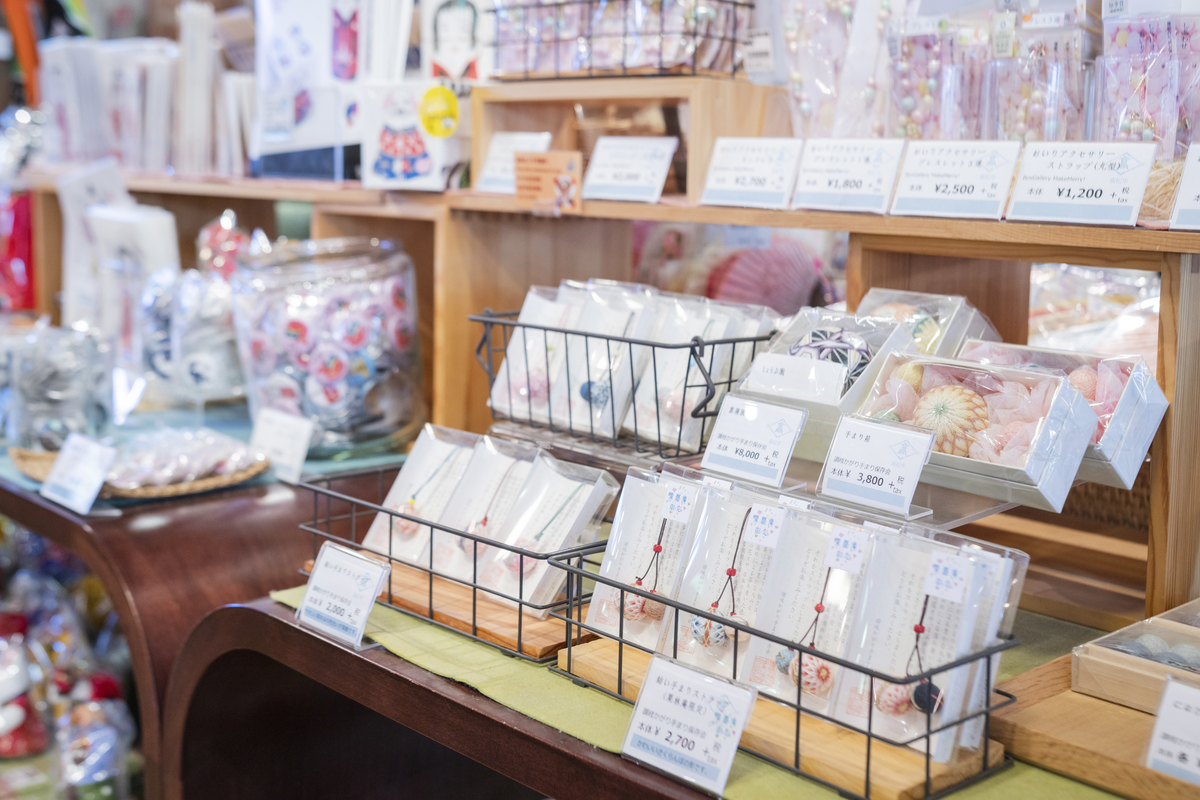
Gathering date:2019.6.28 / Sanuki Toy Museum Shop





